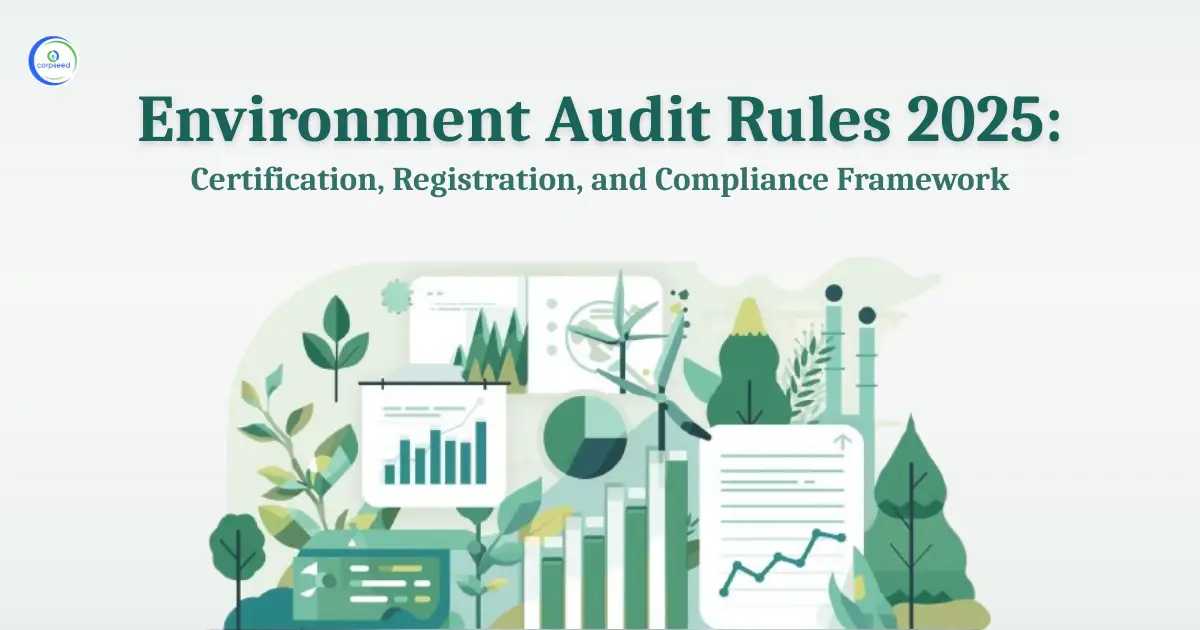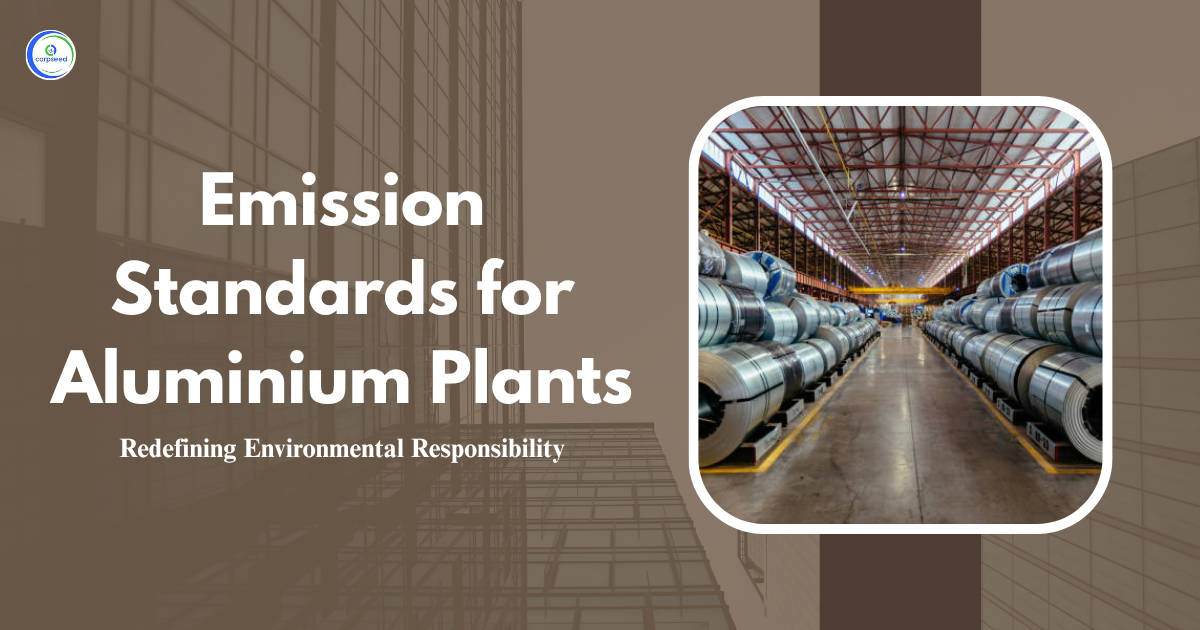Introduction: Environmental Impact Assessment in India
Environment impact assessment, whenever you go to set up a business or industry certain mandatory regulations need to be followed to assure that the impact of the business on the environment is as per the set norms or not, the assessment provisions are aimed to reduce the damages to the Environment at the very beginning when the project is planned to establish. The assessment process is followed uniformly throughout the world, through the Mandate set by the International Authority which involves professionals for the assessment of the Project. The process involves the identification, evaluation, preparation, and mitigation of the social, biophysical, and other effects of the project. The EIA process is mandated by the Rio de Janeiro Declaration, of 1992, which mandated bringing public issues to a single platform for the mitigation of Environmental issues. The Environmental impact assessment Authority (EIAA) was constituted under the Environmental Protection Act, 1986 for the imposition of norms for the Construction of Modernization of a particular project only after the approval of the State board.
Table of Contents
- Introduction: Environmental Impact Assessment in India
- History of Environmental Impact Assessment (EIA)
- Objectives of Environmental Impact Assessment (EIA)
- What is an Environmental Impact Assessment (EIA)?
- What is the Importance of Environmental Impact Assessment (EIA)?
- What Are The Advantages of EIA?
- What is the Process for Environmental Impact Assessment (EIA)?
- Who Are The Participants in the EIA Process?
- Is The EIA report Mandatory in India?
- Conclusion
--------------Blog Contact Form-------------
History of Environmental Impact Assessment (EIA)
As science and technology advanced, various projects that were intended to benefit people began to have negative effects on the environment, compelling us to consider alternatives. As a result, laws were enacted to mitigate the negative effects, highlighting the importance of Environmental Impact Assessment (EIA) The United States was the first country to prioritize EIA with its National Environmental Protection Act (NEPA) of 1969. A large number of countries that had industries followed. EIA legislation was enacted in Canada, Australia, the Netherlands, and Japan in 1973, 1974, 1981, and 1984, respectively. The European Community (EC) made EIA mandatory in July 1985. Columbia was the first developing Latin American country to implement an EIA system in 1974. Thailand and the Philippines have long had EIA procedures in place in Asia and the Pacific region. In 1984, Sri Lanka made EIA mandatory. Although Rwanda, Botswana, and Sudan have some experience with EIA, the process is still in its early stages in Africa. Various countries have used the EIA as a decision-making tool. In 1974 and 1979, the Organization for Economic Cooperation and Development (OECD) issued EIA recommendations to its member countries, and in 1986, it issued recommendations for development aid projects. In 1992, the OECD issued guidelines for good EIA practices (OECD, 1992). Columbia was the first developing Latin American country to implement an EIA system in 1974. Thailand and the Philippines have long had EIA procedures in place in Asia and the Pacific region. In 1984, Sri Lanka made EIA mandatory. Although Rwanda, Botswana, and Sudan have some experience with EIA, the process is still in its early stages in Africa. Various countries have used the EIA as a decision-making tool.
In 1974 and 1979, the Organization for Economic Cooperation and Development (OECD) issued EIA recommendations to its member countries, and in 1986, it issued recommendations for development aid projects. In 1992, the OECD issued guidelines for good EIA practices (OECD, 1992). 1992).
Objectives of Environmental Impact Assessment (EIA)
- The main objective of the Environment Impact Assessment is to analyze the social, economic, and environmental impacts of the development projects. Identification of these factors helps the proponent to get the most efficient method of working.
- EIA provides detailed information about the impact of the proposed project on the environment so that the state could predict the environmental consequences of the proposed project.
- Environmental Impact Assessment supports the idea of sustainable development and it provides an efficient method of sustainable development that cause the least amount of harm to the environment.
What is an Environmental Impact Assessment (EIA)?
The importance of Environmental Impact Assessment. Primarily, we need to understand an Environmental Impact assessment and why it is required. EIA (Environmental Impact Assessment) is one of the most important methods to measure the level of impact on the environment causing due to the proposed project. This is the scientific method to analyze the environmental impact of several projects like Mining, non-recyclable waste treatment plants, Irrigation dams, and any other industrial units as well. As per the Environmental (Protection) Act. 1986, the draft notification was issued with the powers of the central government. This draft was issued to make sure that every industrial project and such projects follow the specific guidelines which results improve in environmental quality. I think we have understood the meaning of Environmental Impact Assessment, now we are going to tell you about the importance of Environment Impact Assessment.
Read Our Blog: Importance of Environmental Impact Assessment in India
What is the Importance of Environmental Impact Assessment (EIA)?
Now we are going to tell you about the importance of Environmental Impact Assessment in India. If any project doesn’t follow some of the regulations of EIA but it would still have some of the benefits of EIA. Here is a list of points that shows the importance of Environmental Impact Assessment:
- As we all know that we are a developing economy and this development also cause a big environmental impact. Environmental Impact Assessment helps to connect development and environmental protection so that the state can achieve the goal of sustainable development.
- Environment Impact Assessment gives a complete blueprint of the project and this blueprint always makes sure that the project would cause the least possible environmental damage.
- There are some specific factors on which EIA evaluates a project. These factors are technological risk, Cost of environmental impacts, etc. and Environment impact Assessment makes sure that all of these factors should be fulfilled as per the requirements.
- The public hearing is an important stage in the process of EIA. The proponent must make sure that all the people who are going to affect by the project are involved in the public hearings and such activities.
- Environment Impact Assessment report provides the most efficient method to reduce the impacts of the project on the environment which saves the environment and resources both.
- Environment Impact Assessment can also help in predicting and avoiding natural disasters such as floods and landslides.
- Environment Impact Assessment also helps in maintaining a healthy relationship between the state (government), developers, environmentalists, and the public. Maintaining good relations between the state (government) and the public is very important for the peace and development of the state.
- Several projects which affect the environment in certain aspects can create some legal disputes. Environment Impact Assessment can help to solve these kinds of issues and reduce the burden on the judiciary of the country.
- EIA is very essential for every project which impacts the environment so that the project proponent could get the benefits of Environment Impact Assessment.
What Are The Advantages of EIA?
The Environmental Impact is conducted with keeping in mind the negative impact of the Project that is going to be established at an industrial location or the location specified by the authority, let’s go through the advanced environmental and economic benefits of Environmental Impact Assessment:
- EIA helps in the reduction of cost and time of the proposed project and it also improves the design of the proposed project.
- EIA helps in avoiding any type of treatment and clean-up cost which could impact the law and regulations of the state.
- Environmental impact assessment creates a base for environmentally friendly projects.
- EIA also spread awareness of the environmental legislation which reduces the number of violations of environmental-related acts.
- EIA also promotes the protection of the Environment.
- EIA helps the project proponent in the complete and optimum utilization of the available resources which creates a balance between development and environmental protection. It means it also helps in sustainable development.
- EIA informs the decision-makers about every update of the proposed project.
- EIA report covers all the critical aspects of the environmental factors of India.
- Environment Impact Assessment represents the complete study of the possible consequences of the proposed project.
- EIA helps the project proponent in predicting the environmental consequences of the proposed project and also helps in project planning as well.
- The environmental ministry or other specific regulatory bodies approves the proposed project based on the EIA report. EIA reports are important to get permission from these regulatory authorities.
- Environmental impact assessment must define all the required measures that the project would take to reduce the impact of the project on the environment.
- Nobody can start any such project without the process of the public hearing and EIA-based approvals are granted based on these public hearings. It makes sure that the people who are going to get affected by the proposed project are aware of all the consequences of that project.
- EIA helps in making a connection between environment and development which helps in completing the goal of sustainable development.
What is the Process for Environmental Impact Assessment (EIA)?
Here is a list of steps for the Environment Impact Assessment which is conducted with a very simple procedure that needs to be followed by the Project proponent before the Establishment and put in the operation of the project from the Environmental Impact Assessment Authority; here are guiding principles Steps that need to be followed for EIA process:

- Identification:- The identification of the type of project which is being undertaken by the Project proponent and the extent to which it will harm the environment, accordingly the categorization of the Project goes on;
- Screening:- In this stage, the Proponent needs a complete and partial study of the proposed project regarding whether Environment Clearance is mandatory or not. As per the regulatory provision, the screening criteria depend upon the following criteria:
- Location of the Project, where is it going to be located
- Type of the Project to be identified as per the Board notification;
- Amount of investment the Project proponent has conducted
The screening criteria determines whether the Environment impact assessment is required, and if required to which extent it is.
- Scoping:- In this stage, the proponent needs to monitor the potential impacts of the Project, zone of impacts, and mitigation possibilities. This monitoring should be done with the supervision of experts and public engagements. Through the scoping process the extent and range, of effect on the air, water, noise, soil, quality, and quantity of impact of the project are determined.
According to the assessment of the Scope of the Project the identification of issues of the project and assessment methodology, the requirement to be done, and all phases of the project are determined in the scoping. Through the scoping method
- Impact Assessment:- Through this process, the prediction is made of the Environmental Impact and consequences of the project that has been undertaken. The processes are;
- Assessment & Evaluation (Analysis) of the Impacts and Development of the proposed project:- In this stage, the Proponent needs to analyze the consequences of the proposed project and evaluate the complete cost of the proposed project.
- EIA Report also called Environmental Impact Statement (EIS):- The Proponent needs to prepare an EMP (environmental management plan) and Non-technical summary. The EMP (environmental management plan) and Non-technical summary will be required to be present in front of the general public (Public hearing) at this stage.
- Mitigation:- The Mitigation report is given to the Project Proponent to mitigate the adverse impacts of the Project, and the way to lessen the negative impacts and improve the benefit from it.
The Mitigation measure can be subdivided into the following:
- Preventive measures refer to public awareness programs regarding the impact of the Project and the way to minimize the adverse effects of the project.
- Compensatory measures are adopted for the cost to be imposed against the Project proponent and the same is used to reduce the impact of the Emissions being generated from the project.
- The last one is a Corrective measure that is adopted to facilitate the services for the mitigation of adverse impacts on the environment through the installation of technological types of equipment and additional steps to improve the greenery around the project for the reduction of adverse impacts of the effluents.
- Reporting for appraisal:- The local authorities after completion of the initial assessment send the documents such as the Project report, Environmental Impact Statment (EIS), Environmental Management Plan (EMP), and Human Exposure Assessment Location (HEAL) for the monitoring of air quality, water quality, and food contamination monitoring on a global basis. Environmental questionnaire and answer made between authority and Project proponent to the Environmental Appraisal Committee.
- Public Hearing:- The information about the establishment of the Project is given to the locality and people residing in the vicinity of the Project to meet at a certain time and place for consultation on the Project development, and the public is allowed to make suggestions to the State Pollution Control Board.
- Review (EIA report):- The review is conducted of the report and comments made by the local authorities and locality.
- Decision Making:- IAA (Impact Assessment Authority) will consult with experts to the project-in-charge and they will take the financial decisions of the project. They will consider the EIA (environment impact assessment) and EMP (Environment management plan).
- Monitoring, compliance, enforcement, and environmental auditing:- In this stage, the project proponent has to monitor the previous stages of the process and make sure that everything works based on EMP (environmental management plan).
Read Our Blog: What Are The Procedures Used To Conduct The Environmental Impact Assessment
Who Are The Participants in the EIA Process?
- Project Proponent:- The project Proponent could be Government or Private Agency that starts the proposed project.
- Decision maker of the proposed project:- The decision maker could be a designated person or individual/group who is responsible for the decisions of the project.
- Assessor Agency:- This agency would be responsible for the preparation of EIS (Environmental Impact Statement).
- Reviewer-Individual/Agency/Board:- The reviewer is the person who reviews and monitors the proposed project.
- Expert advisers, Media and Public, Environmental organizations, etc:- This team of advisors would help the project proponent to set the measures for the environmental impact and they would help to form the EMP (environment management plan) and Non-technical summary.

Is The EIA report Mandatory in India?
In India, environmental impact assessment is now inevitable for several industries. EIA report is significant to make sure that industry is not causing harm to the environment surrounding it. EIA report is not something that is only required to start a project but it is also socially responsible for it to conduct an EIA.
In India, The Environmental Impact Assessment is an extremely complex procedure that must be completed by experts because only they can provide accurate, authentic, and high-quality EIA reports which contain the full study of the proposed project.
But we can say that it’s not a simple task to complete an EIA for a project. The project proponent would need the help of experts who are familiar with all the aspects of that project.
By doing so, the Project proponent needs to be ensured that all documents needed for an EIA are complete and that all requirements will be met. Which would generate an accurate EIA report with every requirement for the proposed project.
Conclusion
In this article, we talked about the importance of the Environment Impact Assessment report and we have shared a complete procedure for the same. This article talks about the different aspects of environmental impact assessment. We talked about the complete step-by-step process of the EIA report.
This portion of the site is for informational purposes only. The content is not legal advice. The statements and opinions are the expression of author, not corpseed, and have not been evaluated by corpseed for accuracy, completeness, or changes in the law.
BOOK A FREE CONSULTATION
Get help from an experienced legal adviser. Schedule your consultation at a time that works for you and it's absolutely FREE.







_Corpseed.webp)
.webp)
